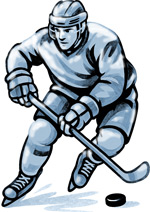The Alternate-Hand Wall-Toss Test is a test of hand-eye coordination, where the participant throw a ball against a wall from one hand in an underarm action, and attempt to catch it with the opposite hand.
test purpose: to measure hand-eye coordination
equipment required: tennis ball or baseball, smooth and solid wall, marking tape, stopwatch (optional)
pre-test: Explain the test procedures to the subject. Perform screening of health risks and obtain informed consent. Prepare forms and record basic information such as age, height, body weight, gender, test conditions. Perform an appropriate warm-up and practice. See more details of pre-test procedures.
procedure: A line is placed on the ground a certain distance from the wall (e.g. 2 meters, 3 feet). The person stands behind the line and facing the wall. The ball is thrown from one hand in an underarm action against the wall, and attempted to be caught with the opposite hand. The ball is then thrown back against the wall and caught with the initial hand. The test can continue for a nominated number of attempts or for a set time period (e.g. 30 seconds). By adding the constraint of a set time period, you also add the factor of working under pressure.
scoring: This table lists general ratings (source unknown) for the wall toss test, based on the score of the number of successful catches in a 30 second period.
| Rating | Score (in 30 seconds) |
|---|---|
| Excellent | > 35 |
| Good | 30 - 35 |
| Average | 20- 29 |
| Fair | 15 - 19 |
| Poor | < 15 |
variations / modifications: There are numerous variation that can be made to the procedures of this test depending on the desired outcomes: the size, weight and shape of the object, the distance from the wall, the number of attempts or time period can all be varied. The procedure should be recorded with the results and kept consistent for future testing of the same participants.
advantages: minimal equipment and costs are involved in conducting this test, and it can be self-administered.
disadvantages: the ability to catch the ball can be affected by how hard and straight the ball is thrown to the wall. You may want to draw a target on the wall to help with throwing accuracy. The test results may be skewed if the subject 'flukes' a few catches, so repeating the test a few times may result in more accurate results.
Similar Tests
- Stick Flip Coordination Test — attempt to flip a stick using two other sticks.
- Juggling Coordination Test — keep an object in the air, hitting it from hand to hand
Related Pages
- Other coordination tests



